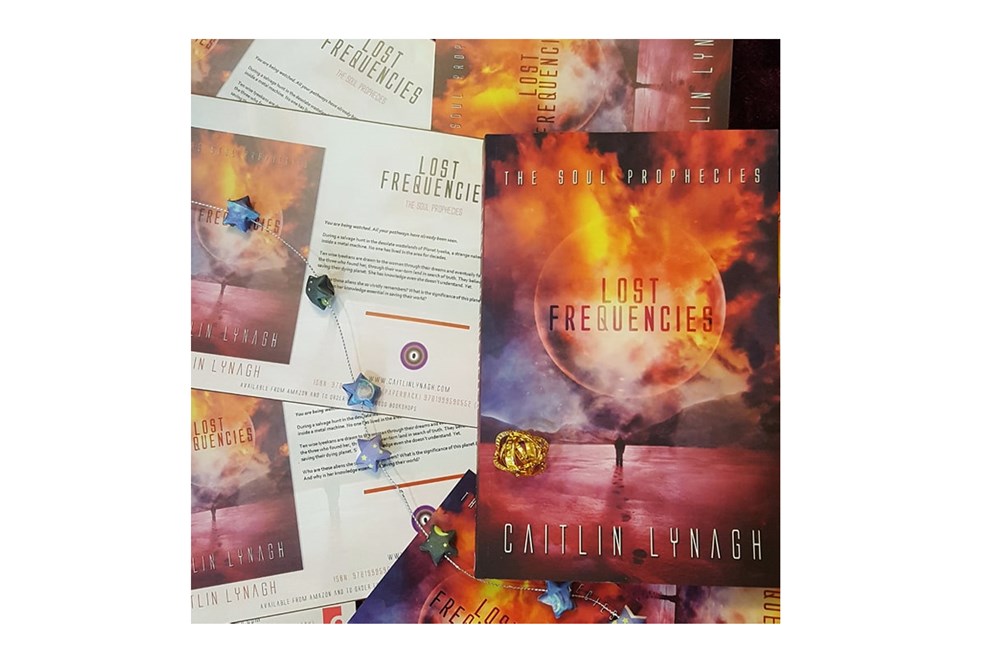Lost Frequencies began as an accumulation of two big ideas, one being the idea of another planet with conscious life and two being the idea of an existence after death.
The universe is an unfathomably large place and as humans we are obsessed with the idea of extra-terrestrial lifeforms and what they might look like. There have been many wild, strange, and terrifying depictions of extra-terrestrial life written in fiction. However, considering humanity beat the odds and evolved on planet Earth, I don’t think it is too outrageous to suggest that other lifeforms could evolve in a similar way on a similar type of planet. Why complicate things? The evolutionary patterns which worked here on Earth could work on another planet too.
Iyeeka is a large planet inhabited by Iyeekans, a species which look almost exactly like humans, with some minor differences. The majority of Iyeekan’s are incredibly pale with pointed ears and stand over six feet tall. Their continents are much larger than the continents on Earth, their seas and oceans are acidic and toxic, some of their animals are more dangerous, and their skies are pink instead of blue. Iyeeka have Eyeleetansy and Laluta plants whereas Earth have Bumblebees and flowers. There are many sharp contrasts between humans and Iyeekans, but there are three major differences:
- Iyeekans did not evolve in a violent manner. They did not have wars or battles, and they didn’t have kings, queens, emperors or religion. There was always plenty of land and Iyeekan’s realised that it was better to work together than to fight.
- Iyeeka had a biological metal called lif which Iyeekans could control and direct with their consciousness. In this way they had a better understanding of the consciousness because they had something physical and direct that they could see and measure it by.
- Iyeekans evolved at a much slower pace than humans. What has taken humans a few centuries and decades to achieve, it took Iyeekans tens of thousands of years.
When I started thinking about how humans could potentially exist beyond death. It led me to the things that science can’t fully explain; emotions and the consciousness. Religion has tried over the centuries to explain life and death in its own way, but I’m not a religious person, and I believe a lot of religion has been corrupted and lost in translation. I came up with the idea of Nowtime and the Creative Field based on ideas and phenomena known within Quantum Physics. This for me was a place outside but also linked to the physical realm and living world. A place where a consciousness or spiritual emanation of a human could exist, effectively the human soul. In the Creative Field time behaves differently to how we humans experience time today. Due to Nowtime, the past collapses, the present is always now and the future is an ever-expanding tangle of possibilities.
The series centres around Nowtime and the idea that the future is constantly changing and that some outcomes are more likely than others. It focusses on individual decisions and how even the smallest decisions can have a massive impact on the future. The books follow individuals who either know too much or are the unfortunate victims of the remote possibilities.
Lost Frequencies is set billions of years before the evolution of mankind. Certain Iyeenkans are able to see into the future whilst they sleep, and as a result they are able to predict the downfall of their world. However, convincing others that their world is going to end and finding solutions to stop it from happening isn’t easy. Thirteen Iyeekans are singled out, but not for the reasons they hoped for. Their world is dying, the Eyeleetansy numbers are dwindling and some Iyeekans are turning to violence. It is a race against time to save their species, but is there enough time left?
The series follows on with ‘Another Path’. After the final destruction of Iyeeka the story jumps forwards to Earth at the beginning of the 21st Century. The Thirteen are now souls and they have been watching the evolution of mankind. They are aware of the many possibilities for the future of Earth, but they are concerned that humanity may destroy their planet. The Thirteen have a greater understanding of the afterlife and the forces which govern everything, and they hope to bring certain humans together in order to propel humanity into a positive future. Unfortunately, not everything goes to plan and certain decisions, along with the unpredictable forces of nature, could cause major problems for mankind.
